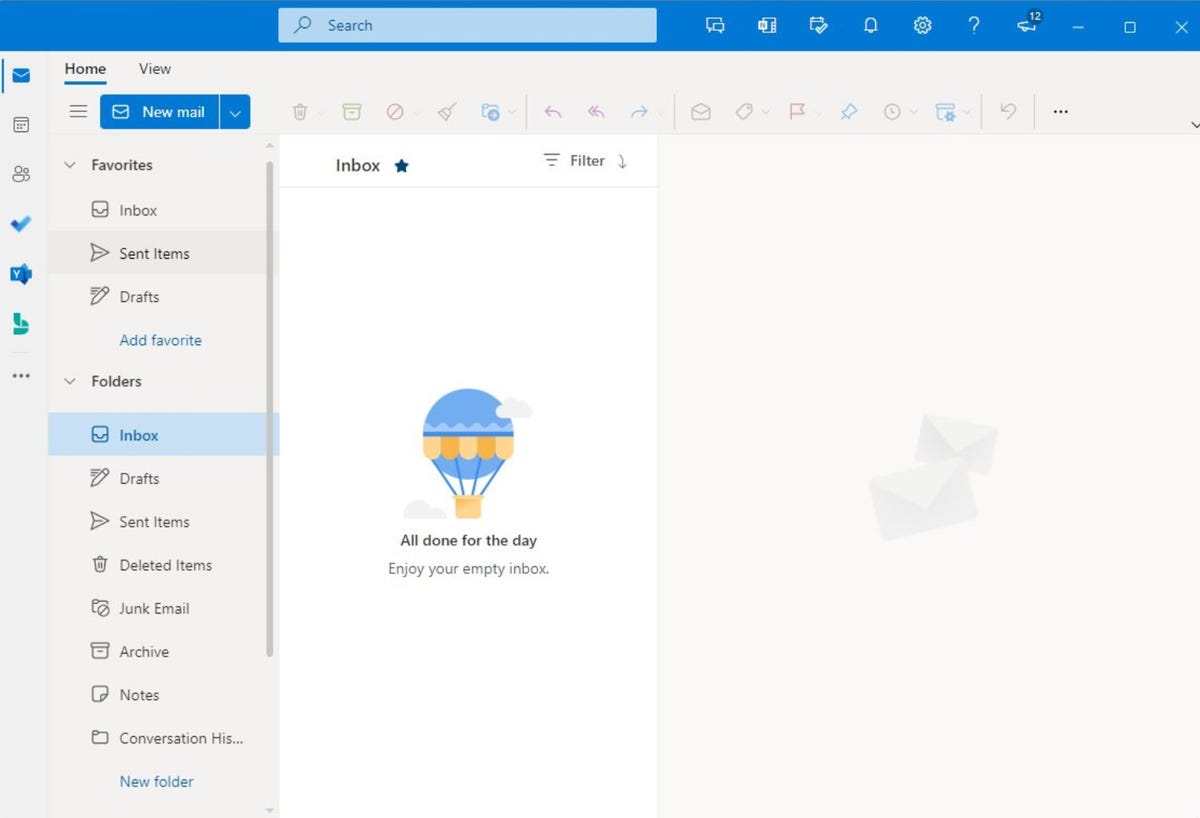
Microsoft has been working to unify its Outlook mail clients for Windows, Mac and the Web for more than a year. Today — at the moment, anyway — you can download the new Outlook even though Microsoft still has not officially unveiled the product.
Windows Central provided a link to the “New Outlook” download on May 6. (Thanks, Zac!) It seemingly works right now for those with Microsoft 365/Office 365 business and education accounts. (I managed to download a copy on Windows 11 this morning at 9 a.m. ET.)
Those expecting some kind of major change may be disappointed, as the new Outlook looks and feels a lot like Outlook.com, which is what sources had said to expect. The new Outlook carried over all my existing Outlook for Windows settings, including Focused Inbox being turned off by default. (YES! Finally!) It did not keep my choice of turning off Conversation View, but it was easy to undo this in Settings. Otherwise, it looks and feels a lot like Outlook.com but with more actions featured on the ribbon, including the ability to set a retention policy.
The new Outlook, which has been known during development as “Project Monarch” and “One Outlook,” has been in testing internally at Microsoft for months. Earlier this year, my contacts said Microsoft would announce the new Outlook this spring and to get a test version of it to Windows Insiders in the Dev and Beta channels by late March or early April 2022. (That still hasn’t happened yet.)
My contacts also said earlier this year that when Microsoft makes available the next feature update for Windows 10 and 11 around October 2022, the new Outlook will be an option and be pinned alongside the existing built-in Mail and Calendar app. Microsoft will likely try to get Windows users to try the new Outlook, but it doesn’t seem like it will force users to migrate to it this calendar year. I’m not sure if next year, at some point, Microsoft will require Windows users to go with the new Outlook and remove the existing Mail and Calendar app.
According to the original leak, Microsoft officials were not intending to replace the legacy Win32 Outlook client with the new Outlook until some much later date.
Microsoft currently has different versions of Outlook for Windows, Mac, the Web, iOS, and Android devices. The mobile versions are based on the Acompli technology it acquired. Microsoft refers to all of these variants as plain-old “Outlook.” The new One Outlook — which also is expected to be branded as “Outlook” once it’s available — will work on the Windows Desktop (Win32/UWP; Intel and Arm), on the Web, and the macOS Desktop.

























